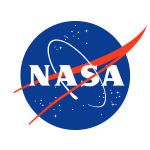Small Business Innovation Research/Small Business Tech Transfer
Innovative Structural and Material Concepts for Low-Weight Low-Drag Aircraft Design
Project Description

The overall technical objective of this multi-phase project is to develop and validate a so-called 'AAW-Process' that consists of (i) the Active Aeroelastic Wing (AAW) technology of employing multiple control surfaces in tandem for achieving loads alleviation and drag minimization using the over-determined trim capability of ZONA Euler Unsteady Solver (ZEUS), and (ii) the aeroelastic tailoring technique for optimum stiffness distribution and weight minimization while satisfying structural design constraints using ZONA's Automated STRuctural Optimization System (ASTROS). The technical objectives specific to Phase II effort are twofold: (1) Analytically design the four Subsonic Ultra Green Aircraft Research (SUGAR) wind-tunnel models that employ Distributed Multiple Control Surfaces (DMCS) and Variable Camber Continuous Trailing Edge Flap (VCCTEF) to achieve the weight and drag benefits, and (2) Fabrication of one of these four designed models to validate the AAW-process experimentally by a future wind tunnel testing. As per the first specific objective, four wind tunnel models will be designed for high speed Transonic Dynamic Tunnel (TDT) testing along with their detailed fabrication and wind tunnel testing plans. These four models are carefully chosen to incrementally demonstrate the benefits of applying AAW technology and aeroelastic tailoring technique by potential future fabrication and wind tunnel tests. As per the second specific objective, the fabricated wind tunnel model will be delivered to NASA along with its target performance improvement predicted by AAW-process for validation with a near-term wind tunnel testing. In order to ensure the safety of the wind tunnel models during the TDT testing, flutter suppression and gust load alleviation controllers will be designed for those models that are not aeroelastically tailored and have analytically displayed potential flutter instability problems.
More »
Anticipated Benefits
The proposed Phase II effort is highly relevant to several on-going and future NASA projects in NASA's fixed wing project under Fundamental Aeronautics Program such as the elastic aircraft flight control and Truss-Braced Wing (TBW) development. NASA is currently studying the application of the VCCTEF to a generic transport model (GTM) and plans to perform a wind tunnel test for measuring its drag characteristics in FY2014-2015. The AAW-process can be adopted by NASA to calculate the optimum SMA actuations for minimum drag prediction to provide a guideline for establishing a viable wind tunnel test plan. NASA also plans to extend the VCCTEF concept to the TBW configuration with a planned wind tunnel test in FY2016-2017. Upon completion of the proposed Phase II effort, a wind tunnel model for the baseline DMCS configuration will already be submitted to NASA and can be readily tested in the wind tunnel for validation of load alleviation and drag characteristics. Thus, NASA can perform a wind tunnel test on this baseline DMCS wind tunnel model as an intermediate step prior to the VCCTEF-TBW testing to validate the AAW-process. Once validated, the AAW-process can be used to establish a viable wind tunnel test plan for the VCCTEF-TBW model. It thus can be seen that through the research planned to be conducted during Phase II of this effort, NASA's Fundamental Aeronautics Program will benefit significantly, thereby largely expanding NASA's technology portfolio.
Since AAW-process developed in this effort can lead to a minimum-weight and minimum-drag design, it will be highly desirable to both military and commercial aircraft companies. ZONA plans to use the results of the wind-tunnel test of DMCS model as a showcase for demonstrating the capabilities of AAW-process. With the experience gained and lessons learned during the Phase II effort, ZONA will have an increased level of confidence to assist the aircraft companies for applying the AAW technology to their designs. Furthermore, since the application of AAW technology requires a set of ZONA commercial software, the ZONA software will be increasingly used by the aircraft design companies, thereby expanding ZONA's software market share. The AAW technology and aeroelastic tailoring technique explored in Phase I + II of this effort can be effectively extended for application towards many categories of flight vehicles including X-56A MUTT, X-48B blended wing-body, joined-wings, sub/supersonic transports, morphing wing aircraft, space planes, reusable launch vehicles, and future military aircraft. More »
Since AAW-process developed in this effort can lead to a minimum-weight and minimum-drag design, it will be highly desirable to both military and commercial aircraft companies. ZONA plans to use the results of the wind-tunnel test of DMCS model as a showcase for demonstrating the capabilities of AAW-process. With the experience gained and lessons learned during the Phase II effort, ZONA will have an increased level of confidence to assist the aircraft companies for applying the AAW technology to their designs. Furthermore, since the application of AAW technology requires a set of ZONA commercial software, the ZONA software will be increasingly used by the aircraft design companies, thereby expanding ZONA's software market share. The AAW technology and aeroelastic tailoring technique explored in Phase I + II of this effort can be effectively extended for application towards many categories of flight vehicles including X-56A MUTT, X-48B blended wing-body, joined-wings, sub/supersonic transports, morphing wing aircraft, space planes, reusable launch vehicles, and future military aircraft. More »
Project Library
Primary U.S. Work Locations and Key Partners
| Organizations Performing Work | Role | Type | Location |
|---|---|---|---|
| ZONA Technology, Inc. | Lead Organization | Industry | Scottsdale, Arizona |
 Langley Research Center
(LaRC)
Langley Research Center
(LaRC)
|
Supporting Organization | NASA Center | Hampton, Virginia |
Primary U.S. Work Locations
-
Arizona
-
Virginia

Suggest an Edit
Recommend changes and additions to this project record.

